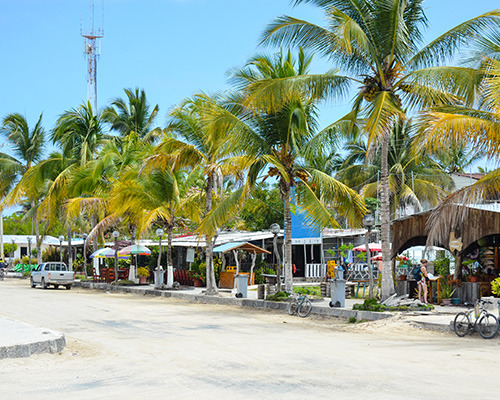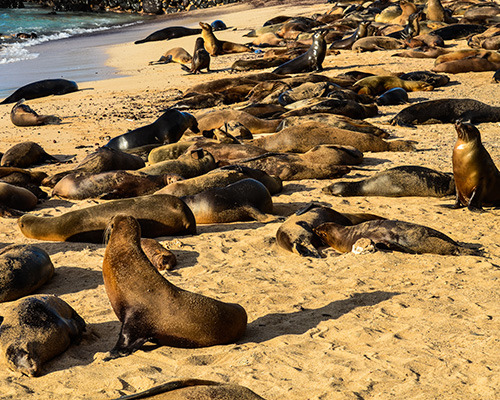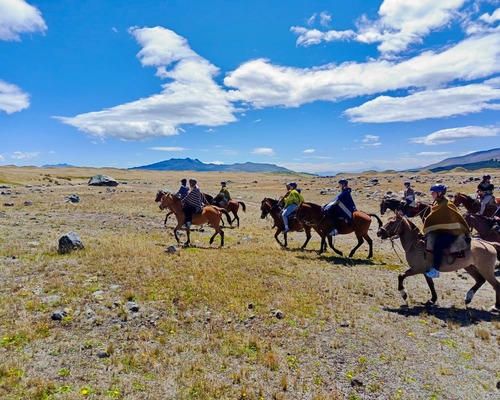8 Day Galapagos Itinerary
*This itinerary is completely customizable. Extra days and activities can be added or taken away. Service projects and 'classroom time' can be added at your discretion. This is simply a guide to help you envision the possibilities for your Exploration of the Galapagos Islands on a student / educational tour.
Lunch and Dinner Provided.
Your journey begins as you land on San Cristóbal Island, where your local Galakiwi guide will be waiting to greet you. After settling in, you’ll enjoy a buffet lunch showcasing traditional Ecuadorian dishes—a first taste of the culture and ingredients that shape life in the Galápagos.
In the afternoon, the group will visit La Lobería beach. The calm waters offer a relaxing introduction to the islands, with a chance to swim or simply watch sea lions sunbathe along the shore. For students interested in conservation, there’s the opportunity to join a local scout group for a beach clean-up—an engaging, student-to-student interaction that connects global learning with local action.
Learning Highlights:
• Experience cultural immersion through local cuisine
• Engage in hands-on conservation and community connection
• Observe sea lions and marine birdlife in a natural setting
• Begin developing a deeper understanding of stewardship and environmental impact
Breakfast, Lunch and Dinner Provided.
Today’s adventure begins on the open water with a boat ride to Kicker Rock, one of the most iconic snorkel sites in the Galápagos. Towering volcanic formations rise from the sea, sheltering marine life like reef sharks, rays, sea turtles, and tropical fish. Students will snorkel through the channel between the rocks, guided by expert naturalists who help identify key species and explain the importance of marine protected areas.
In the afternoon, the group visits the San Cristóbal Interpretation Center. Through interactive exhibits and guided discussion, students learn about the islands’ volcanic origins, human settlement, and the evolution of its unique flora and fauna.
Learning Highlights:
• Identify species and ecosystems in a real-world marine environment
• Understand the role of marine reserves and conservation science
• Learn about island geology, human history, and ecological challenges
Breakfast, Lunch and Dinner Provided.
In the morning, students will visit a sustainable agriculture project in the highlands of San Cristóbal. They'll take part in planting and composting activities and learn how the farm produces organic pesticide using chili peppers—a creative solution adapted to island life. This hands-on experience highlights the importance of local food systems and the challenges of sustainability on remote islands.
After lunch, the group takes a scenic boat ride to Santa Cruz Island. Along the way, students can observe the expanse of the Pacific Ocean, reflecting on the logistical complexities of life in the Galápagos.
Learning Highlights:
• Discover sustainable agriculture and its challenges in island ecosystems
• Participate in local solutions like organic pesticide production
• Experience inter-island travel and observe ocean ecosystems
• Build environmental responsibility through hands-on service
Breakfast, Lunch and Dinner Provided.
Begin the day in the lush highlands of Santa Cruz, where students visit a giant tortoise reserve. Here, they’ll observe these iconic creatures roaming freely in their natural environment, and learn about conservation efforts to protect them. The walk also includes a visit to underground lava tunnels, offering a firsthand look at the forces that shaped the islands.
In the afternoon, visit the world-renowned Charles Darwin Research Station, a hub of conservation science in the Galápagos. Students will explore the exhibits, meet with researchers, and learn about the legacy of Darwin's work and the ongoing efforts to protect the unique biodiversity of the islands. They'll also see Lonesome George's preserved remains and learn how captive breeding programs have helped bring species back from the brink of extinction.
Learning Highlights:
• Understand the biology and conservation of giant tortoises
• Explore volcanic geology through lava tunnels
• Learn about the Charles Darwin Foundation’s scientific contributions
• Connect fieldwork to global conservation efforts and scientific research
Breakfast, Lunch and Dinner Provided.
After traveling to Isabela Island, students begin their exploration with a guided walk through the Wetlands, a UNESCO-listed area filled with lagoons, mangroves, and native bird species like flamingos and whimbrels. The walk leads to the Tortoise Breeding Center, where students will learn about captive breeding and habitat restoration programs that support the island’s endangered tortoise populations.
In the afternoon, the group will kayak through the tranquil coastal bays of Isabela, paddling past volcanic rock formations and possibly spotting rays, turtles, and blue-footed boobies along the way.
Learning Highlights:
• Study wetland ecology and birdlife in a protected natural zone
• Explore conservation science in action at a breeding center
• Observe marine and coastal wildlife by kayak
• Connect ecological systems across land and sea
Breakfast, Lunch & Dinner Provided.
The day starts with a hike to the rim of Sierra Negra, one of the most active volcanoes in the Galápagos. Students walk through highland vegetation and lava flows before reaching the edge of the caldera—an immense crater nearly 10 km across. Guides will explain the region’s geological activity, recent eruptions, and the role of volcanoes in island formation.
After returning to town, the group visits Concha de Perla, a calm, shallow bay perfect for snorkeling. Students will spot parrotfish, sea turtles, sea lions, and more, while exploring coral and seagrass habitats.
Learning Highlights:
• Learn about volcanic island formation and tectonic activity
• Examine different ecological zones by elevation
• Snorkel in a diverse, shallow-water ecosystem
• Contrast geological and biological features between land and sea
Breakfast, Lunch & Dinner Provided
In the morning, take a boat to Las Tintoreras, a tiny volcanic islet off the coast of Isabela. This rugged landscape is home to marine iguanas, white-tip reef sharks, sea lions, and nesting seabirds. Students will walk along lava trails and tidal pools while learning how animals adapt to life in such a dynamic environment.
After lunch, the group travels back to Santa Cruz for a final evening on the islands, with time to reflect on everything they’ve experienced.
Learning Highlights:
• Observe species adaptations in volcanic habitats
• Learn about the impact of invasive species on endemic wildlife
• Explore tidal zone ecosystems and predator-prey relationships
• Begin reflecting on key takeaways from the trip
Breakfast included
On your last morning, transfer to Baltra Airport for your return flight. While there’s no scheduled activity beyond the airport transfer, this day marks the end of an unforgettable learning journey through the Galápagos Islands. Before departure, students will also have the opportunity to observe one final example of sustainable innovation—the Baltra airport itself, one of the world’s first ecological airports. Powered by renewable energy and built using recycled materials, it serves as a model for sustainable infrastructure.
Learning Highlights:
• Mark the conclusion of an experiential learning journey
• Prepare for transition back to home and classroom environments

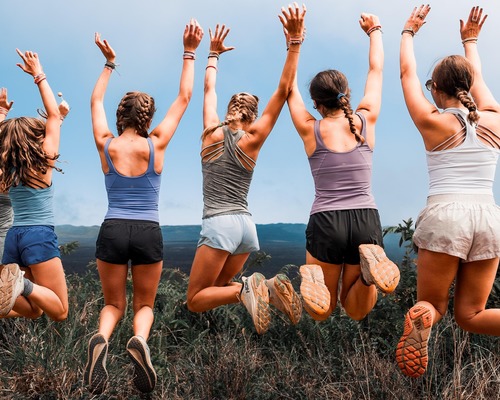
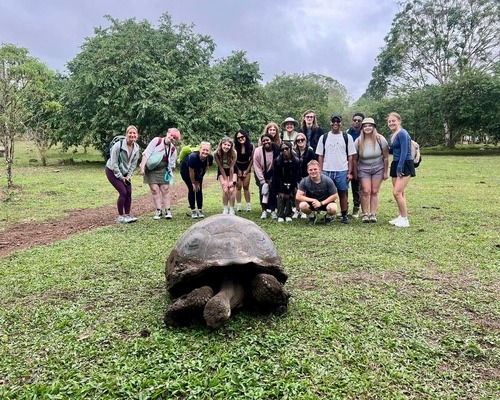
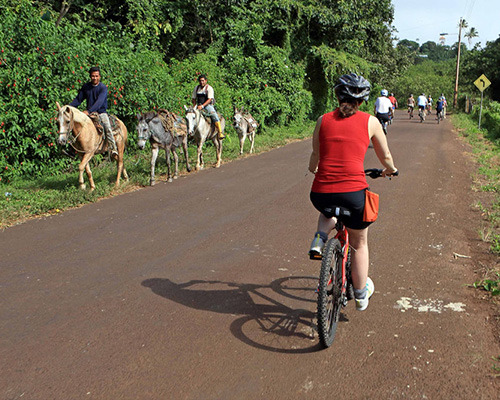
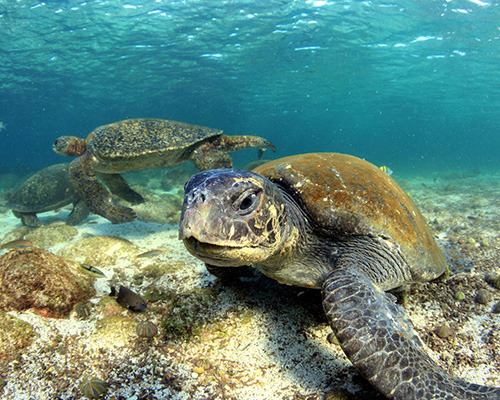
.jpg)

